
Three Beauties, 18th century. Artist Nishikawa Sukenobu/Getty Images
How to Tie a Kimono as a Zombie, or a Geisha, or a Samurai Daughter!
The Japanese kimono, woven of either silk or cotton, has remained unchanged in cut and style for centuries. At least from the perspective of a non-Japanese individual, the kimono never featured crinolines or tourniquets, nor have jabots been sewn on or the necklines deepened. From century to century, the kimono has remained the same rectangular piece of cloth with straight sleeves. The women's version was longer and wider, and the men's was shorter and narrower. Both versions included a sash and a string to secure it, along with jewelry to adorn the sash’s lace.
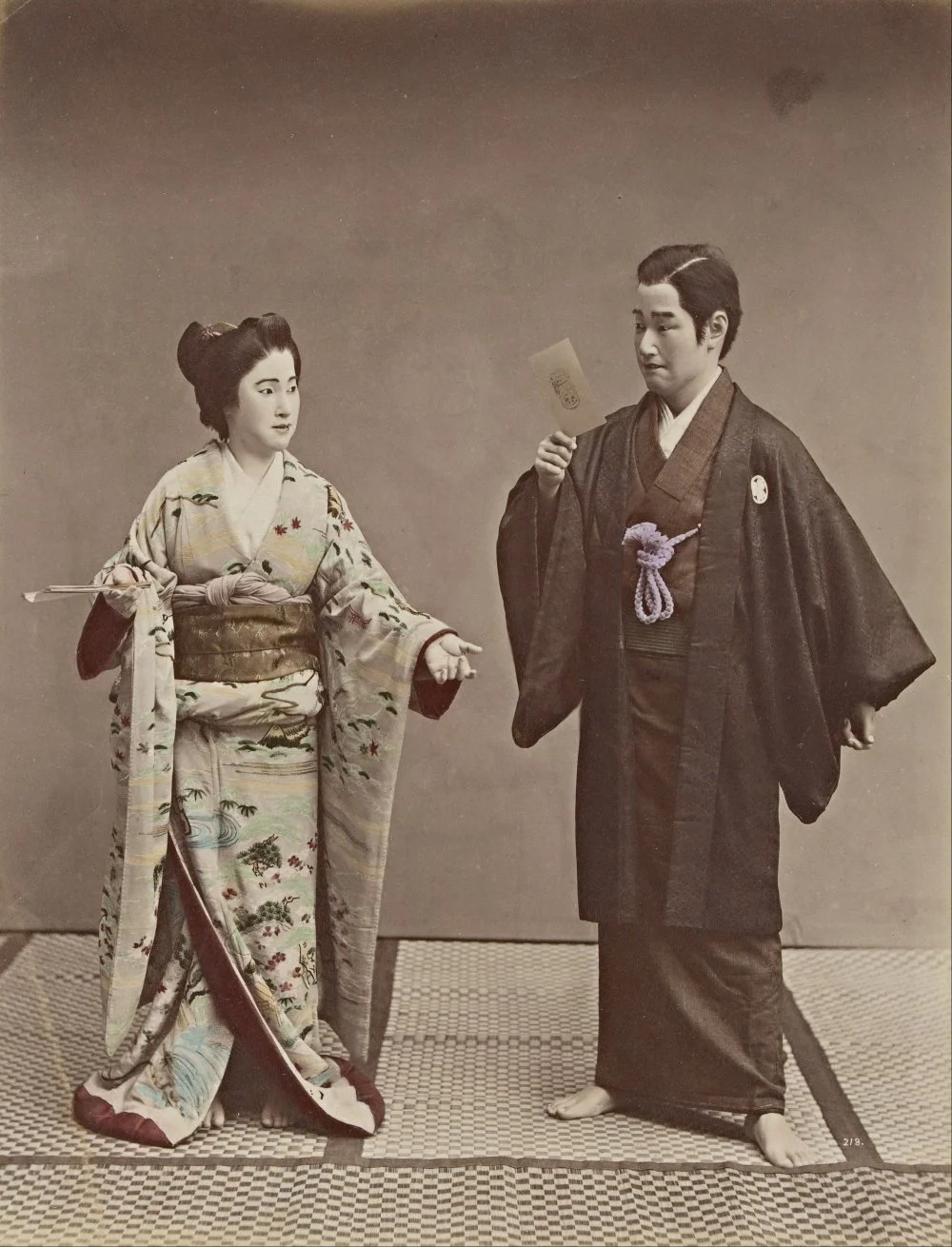
Women's and men's kimonos. 1890/Wikimedia commons
For the Japanese, however, the fashion for kimonos changed rapidly. Today, if all the fashionable individuals in Japan wore kimonos embroidered with fans and carps, a few years later such a common pattern would be worn only by a woman working in a teahouse. In the meanwhile, all the ladies of taste and discernment would now choose patterns of bamboo stalks and twisted shells.

Japanese costume, 20th century/Getty images
Of course, the way the kimono was worn was extremely important—the details said almost everything you needed to know about the wearer.

Nuihaku (Noh Costume), Japan, Momoyama period (1568-1615), 16th century/Getty Images
How to Look like a Woman in Search of Love
Even today, Japanese women still rarely reveal their cleavage, and this is because of the absence of such a tradition. This is not out of any particular modesty but simply because women's breasts have never been considered erotic here. A body part is just a body part. They’re mostly seen as useful because you can feed your children with them. The neck and the back of the head are a different matter. For a Japanese man, seeing a neck exposed from behind, with a dimple, is a terribly sensual and piquant sight. The geisha makeup, for example, took this into account, and this area was never completely whitened, leaving triangles of natural skin between the strips of ceruse, appealing to the sensuality of the viewer. And the kimono collar, flattened at the back so that the neck is almost visible up to the shoulders, is a very frivolous outfit. It is not vulgar or provocative but rather exquisitely erotic. Geisha apprentices, known as maiko, always wear this collar a little lower.
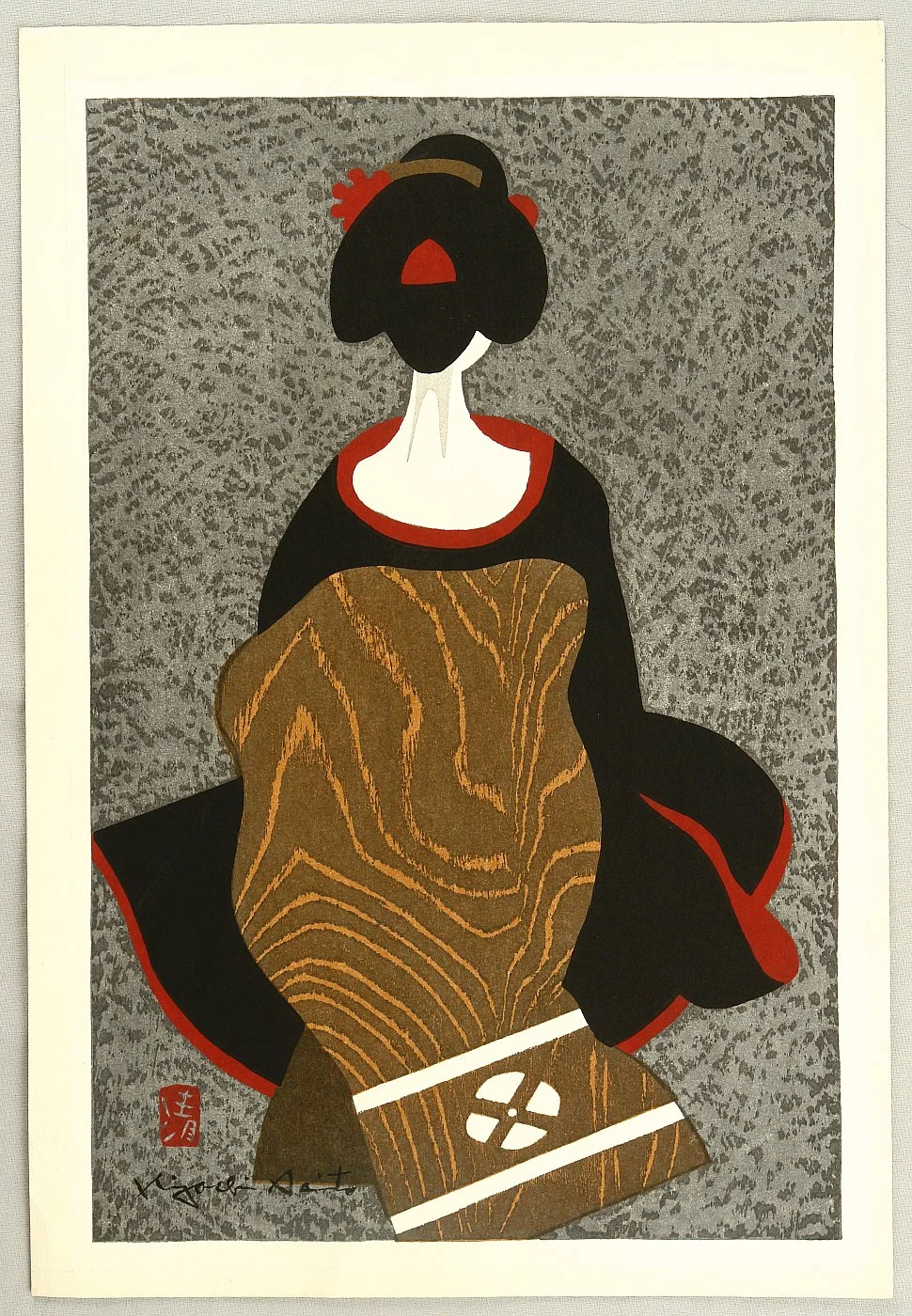
Kiyoshi Saito. Maiko/Artelino.com
How to Look like a Woman Selling Love
Modern Japanese women, who are wealthy enough to buy a kimono (an expensive taste to be sure) and educated enough to wear it, tie the sash strictly on the back only. But in the sixteenth to nineteenth centuries, it was customary for the sash to be tied in the front for ‘teahouse’ women and other ladies of pleasure, including bath attendants who provided massages and engaged in the most affordable form of prostitution. Respectable wives, mothers, and daughters were obliged to wear the sash knotted on their backs.
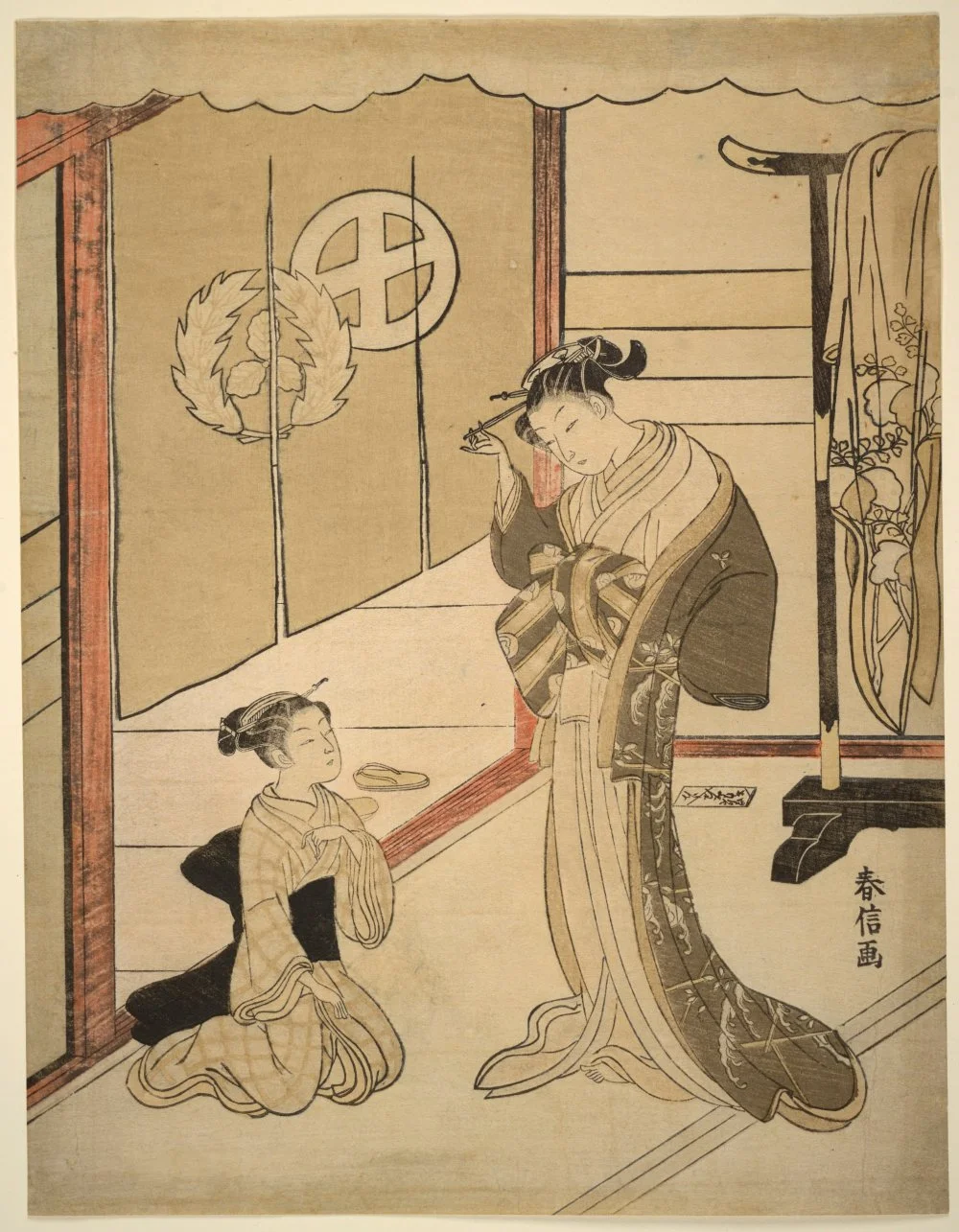
Artist: Suzuki Harunobu (c. 1725-1770) Title: Unknown (Courtesan and kamuro) Date: c. 1765-70 Gift of Dr. Cecilia Segawa Seigle/Kislak Collection
‘A short time later, the clatter of sandals is heard from the back door. The hostess, winking at the guest, gets up and goes out to meet him. The woman who has arrived hurries to change. She is wearing a simple light blue dress made of paper, sleeves without a slit, with a knot in her hands. She hastily unties it and takes off a white petticoat and a second dress: on a scarlet background are embroidered circles representing the wheels of a parade float. Sleeves with a wide slit. A golden sash embroidered with peonies and tendrils is tied at the front, as is customary for hetaeras, but when she hears that she is now the daughter of a samurai, she hurries to tie it at the back, as befits a modest girl. This naive cunning is immediately noticeable’.i
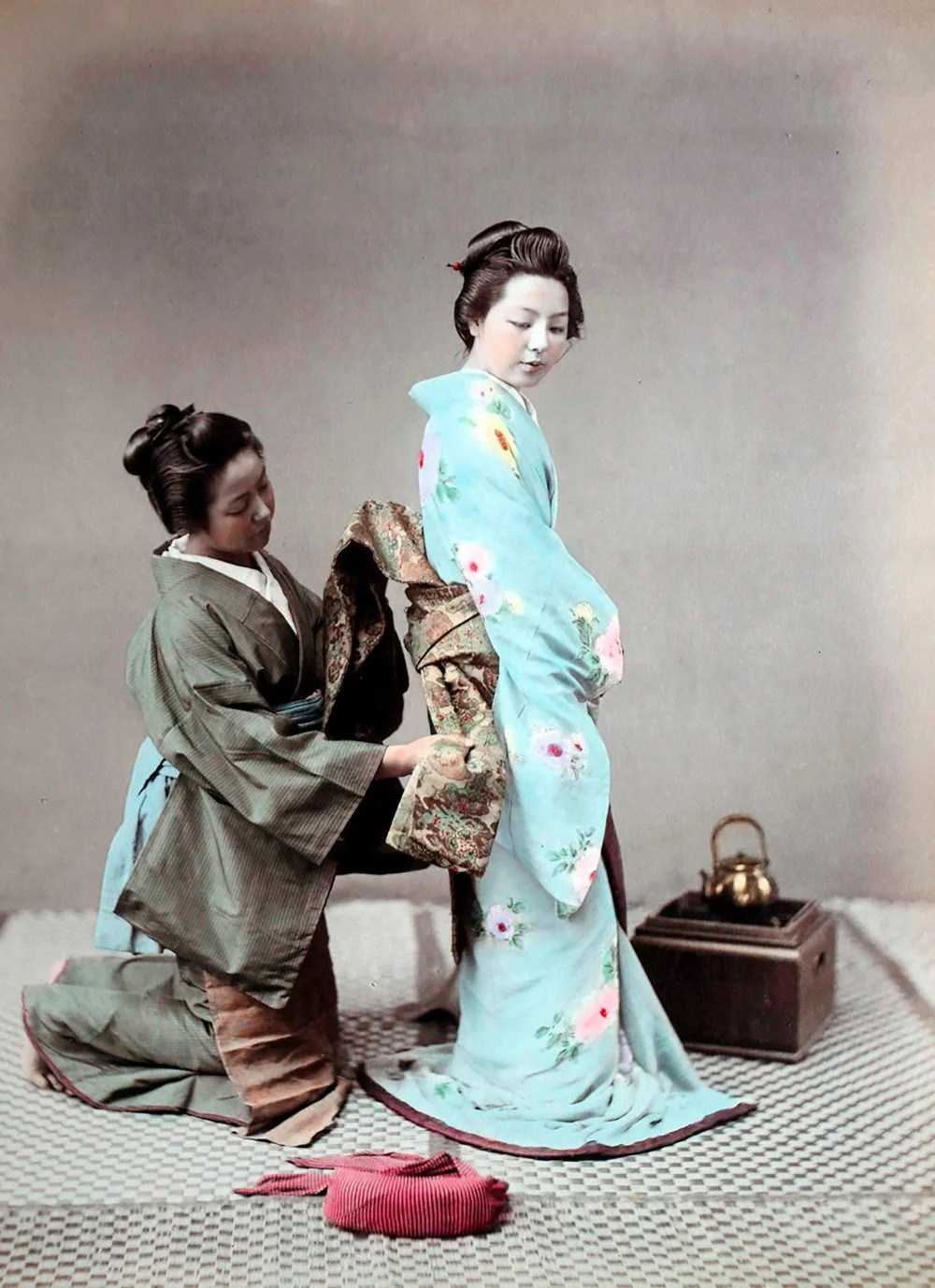
ying kimono belt, Japan/Alamy
How to Look like the Living Dead
In any situation, any kimono, whether worn by a man or woman, is wrapped strictly with the left side over the right side. The only exception to this rule is that the kimonos worn by the dead are wrapped right over left. For example, fifty years ago, it was entirely possible to terrify a Japanese peasant by meeting him on a deserted mountain road wearing a wrongly tied kimono. Since then, the people of Yamato have become accustomed to visitors who do not know their left from their right and walk down the street in a dead man’s kimono.
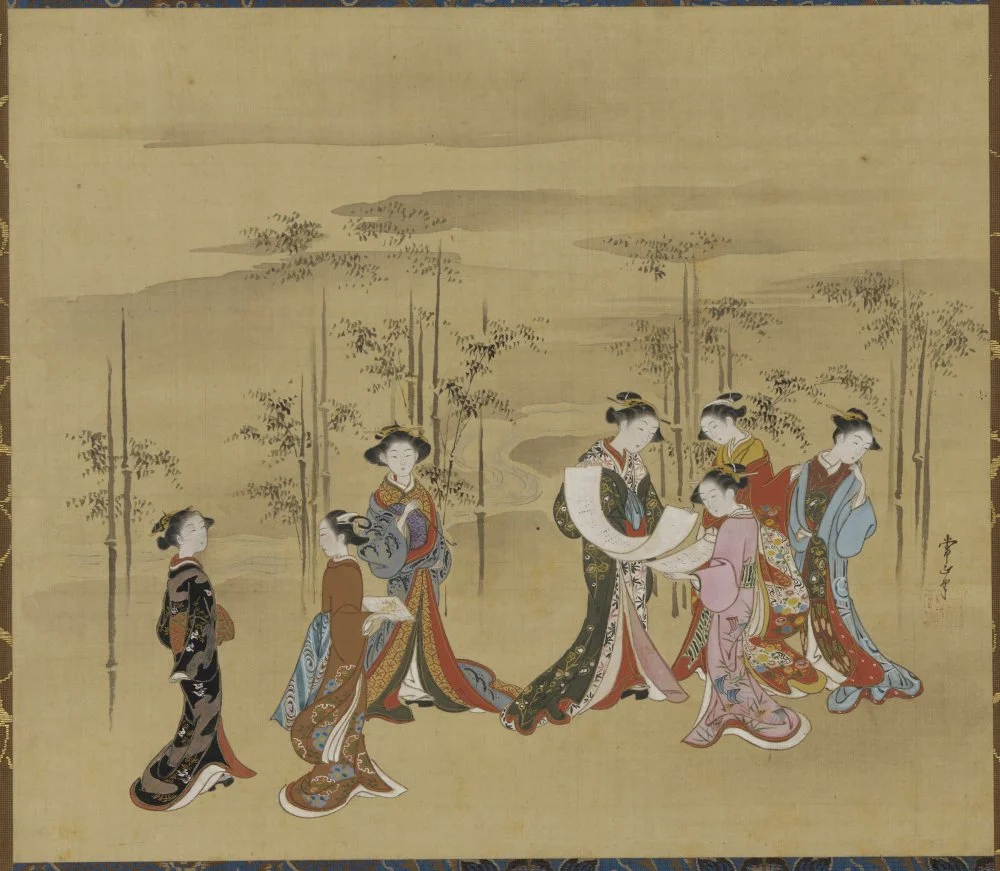
Seven young women in a bamboo grove, 18th century. Artist Kawamata Tsunemasa/Getty Images